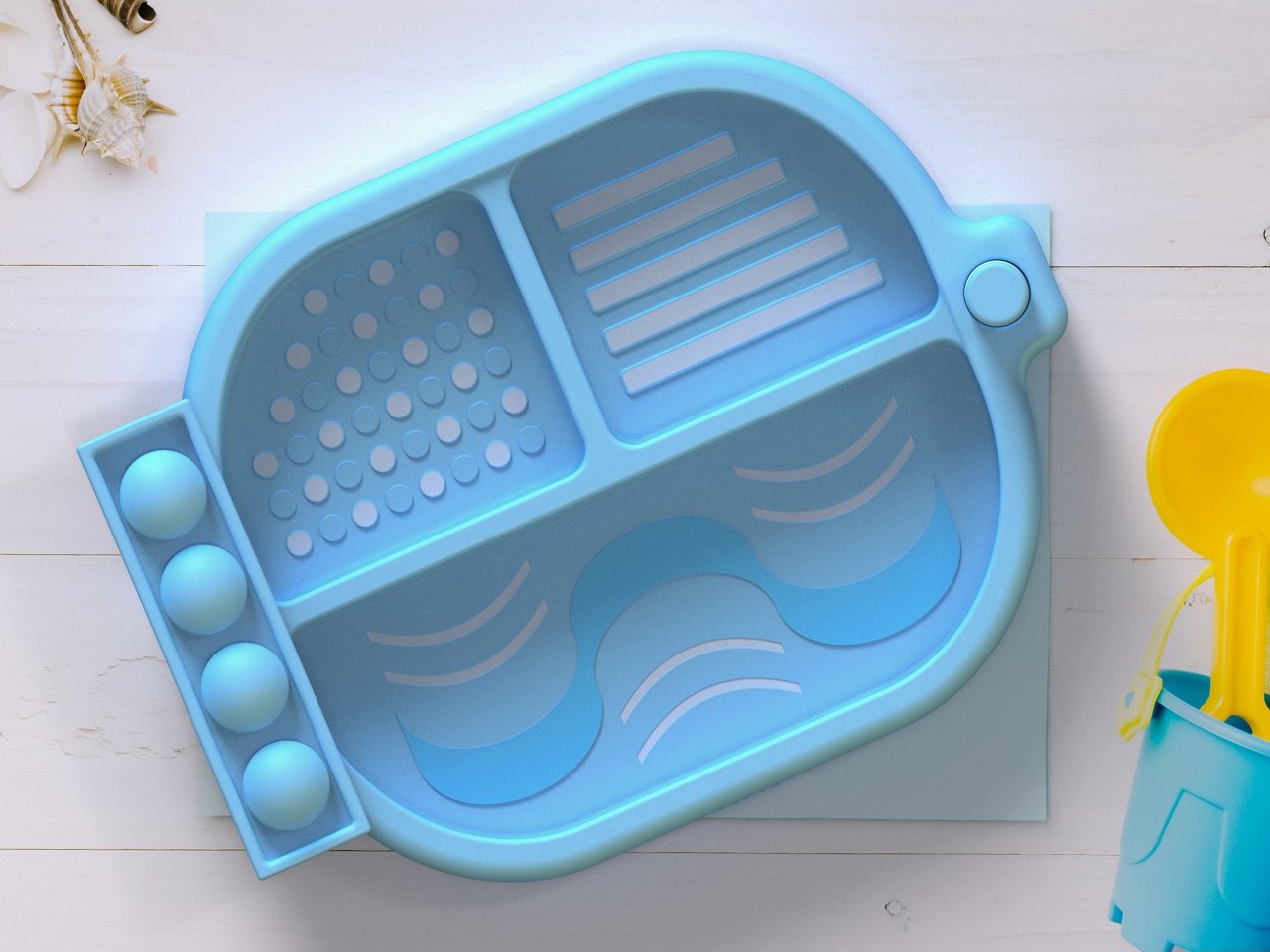Mealtime with toddlers has become a battle that most parents solve by surrendering to screens. You set up the high chair, queue up a cartoon, and watch your child mechanically eat while staring at dancing characters. It feels like a victory when they finish their food, but the victory comes with hidden costs that become apparent over time.
The Platoo Interactive Sensory Meal Plate concept offers a different approach by making eating itself the entertainment. Rather than competing with screens for attention, the plate uses tactile design to engage toddlers through touch, curiosity, and natural play instincts that screens often suppress during meals.
Designer: Tej Belkhode
The design story centers on creating genuine interaction through physical exploration rather than digital distraction. Each compartment of the plate features unique textures and gentle color gradients that invite little hands to poke, squish, and discover. Rounded forms and safe materials ensure the plate can handle enthusiastic toddler investigation without breaking or causing injury.
Color-coded sections guide interaction without overwhelming young minds with too many choices. The textures range from gentle ridges to smooth gradients, providing different tactile experiences that encourage children to notice how food feels, smells, and looks. The plate becomes a canvas for sensory exploration rather than just a container for food.
Platoo works by eliminating electronics entirely and focusing on what toddlers naturally want to do with food anyway. The physical design encourages touching, examining, and experimenting with textures and shapes. Children start noticing details they miss when distracted by screens, developing mindful eating habits that can last a lifetime.
Real-world scenarios showcase how the concept changes mealtime dynamics. Picture a parent setting out colorful vegetables in different compartments and watching their child explore each texture with genuine curiosity. The plate supports self-feeding by making food interaction feel like play rather than a chore that requires external entertainment.
The developmental benefits align with established early childhood education principles. Montessori and sensory play approaches emphasize hands-on learning through tactile exploration. Pediatric experts consistently recommend screen-free mealtimes for developing attention span, sensory awareness, and healthy relationships with food that carry into adulthood.
Parents gain practical advantages beyond the educational benefits. Mealtime battles decrease when children feel engaged and curious about their food. Conversations about textures, colors, and tastes replace negotiations about screen time. The plate creates natural opportunities for learning about different foods without pressure or distraction.
The concept represents a thoughtful response to modern parenting challenges that acknowledges how difficult it can be to keep toddlers engaged without digital help. Rather than judging parents who use screens, Platoo offers an alternative that works with children’s natural curiosity and desire to explore through touch.
Platoo reminds us that sometimes the most effective solutions are the simplest ones. By designing a plate that makes eating feel like play, the concept helps families reclaim mealtime as a moment of discovery, learning, and genuine connection between parents and children, exploring food together.
The post This Plate Keeps Toddlers Engaged at Meals (No Screens Needed) first appeared on Yanko Design.

